
On the left wing of this wonderfully elegantly executed triptych is the moment of the birth of John the Baptist. In the foreground, the viewer sees the Mother of God with the baby John the Baptist in her arms and the righteous Zechariah, the father of St. John, writing on a piece of paper the name to which the boy should be called. The central panel captures the moment of the baptism of John Jesus Christ. And finally, on the right panel of the triptych, Salome is depicted, holding the severed head of John the Baptist on the platter.
Authenticity of feeling A happy man who lived a life in harmony with himself, in works that do not burden the soul. The artist who lived this life is twice as happy. And, probably, Rogier van der Weyden was happy with this happiness – the happiness to work in the field that the Lord gave him.
Work until sweat, to a blissful, exhausted smile, to work hard, but without the hassle and heart trouble. Is it possible to talk about a man who died a few centuries ago and left us with no “verbal” evidence of himself, not a single piece of paper where it would be written in his hand: “Yes, I was happy in this life”? Are we taking too much on ourselves? Maybe too. But we left the master’s paintings, marked by the undeniable authenticity of the feeling. And, whatever one may say, one can not happen so that this “undoubted authenticity” is involuntary, tortured.
Suffered – yes, spilled through yourself, but not tortured. And let us do not know what and how Rogier van der Weyden was talking about his lived life, lying on his deathbed. But all of his paintings – a spiritual testament, which he wrote for many years.
 Triptych of Marriage by Rogier van der Weyden
Triptych of Marriage by Rogier van der Weyden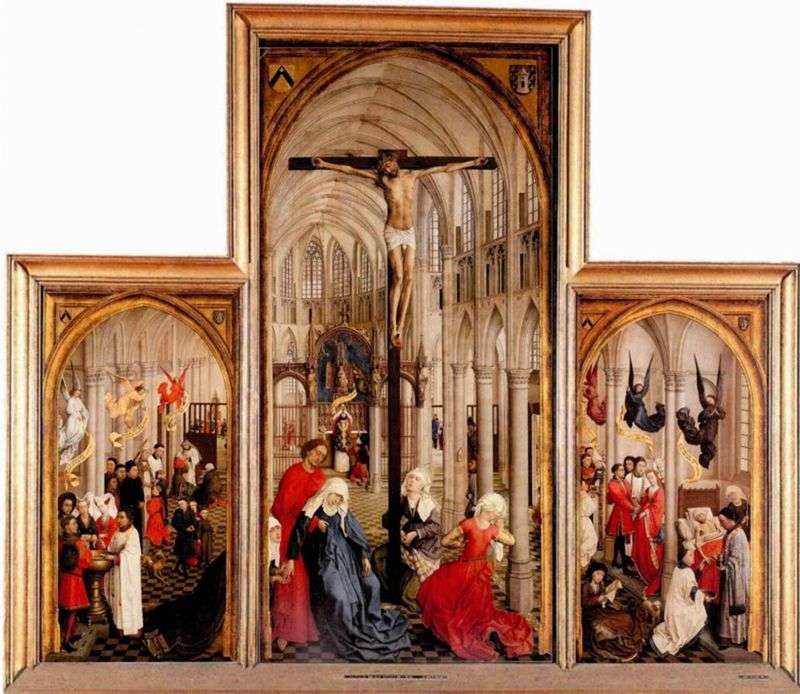 Triptych “The Seven Sacraments” by Rogier van der Weyden
Triptych “The Seven Sacraments” by Rogier van der Weyden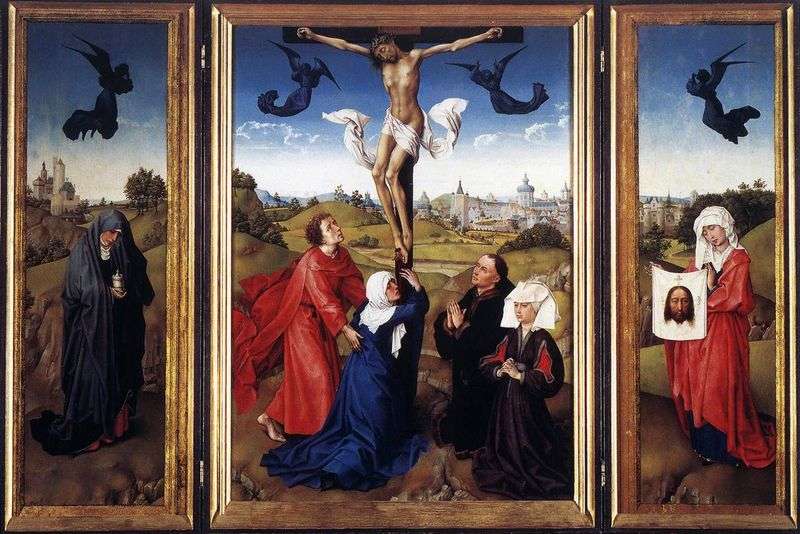 Triptych “Crucifixion” by Rogier van der Weyden
Triptych “Crucifixion” by Rogier van der Weyden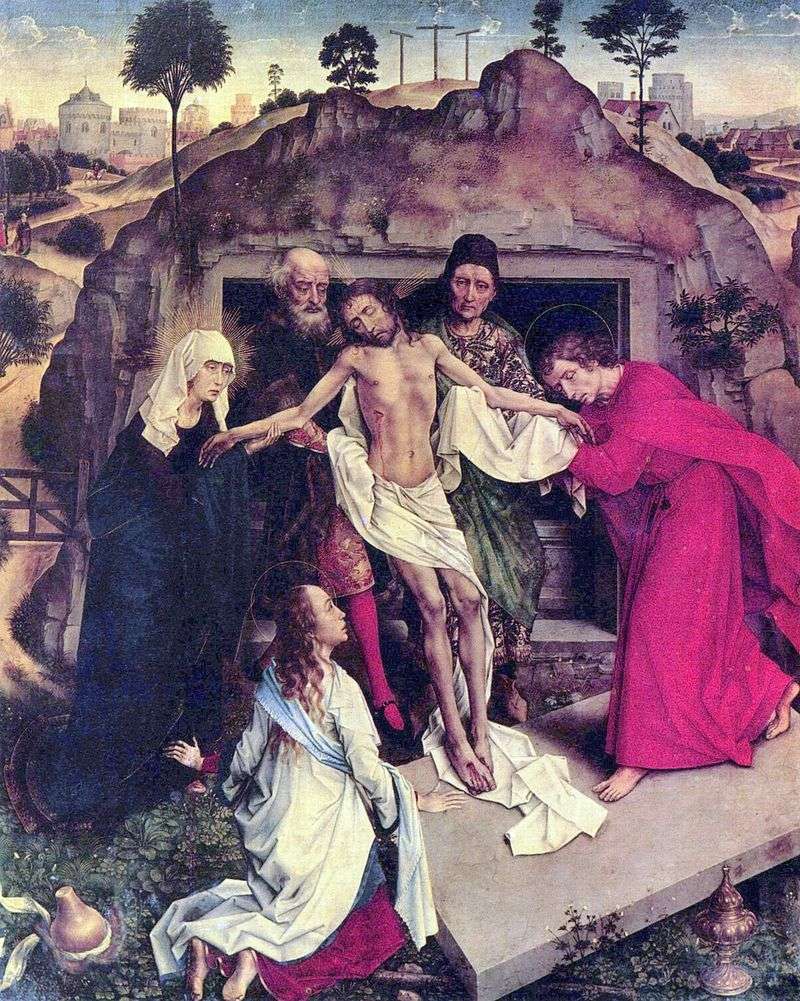 The situation in the grave by Rogier van der Weyden
The situation in the grave by Rogier van der Weyden Altar de San Juan Bautista – Rogier van der Weyden
Altar de San Juan Bautista – Rogier van der Weyden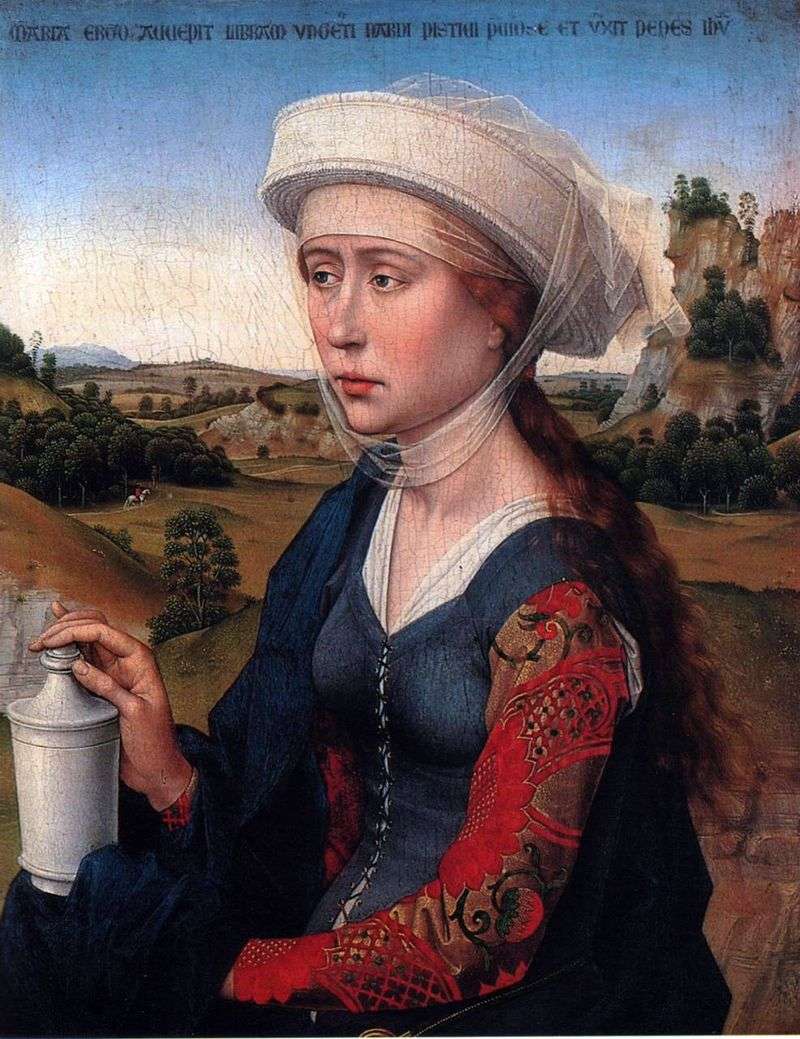 Mary Magdalene. Part of the Triptych of the Marriage Family by Rogier van der Weyden
Mary Magdalene. Part of the Triptych of the Marriage Family by Rogier van der Weyden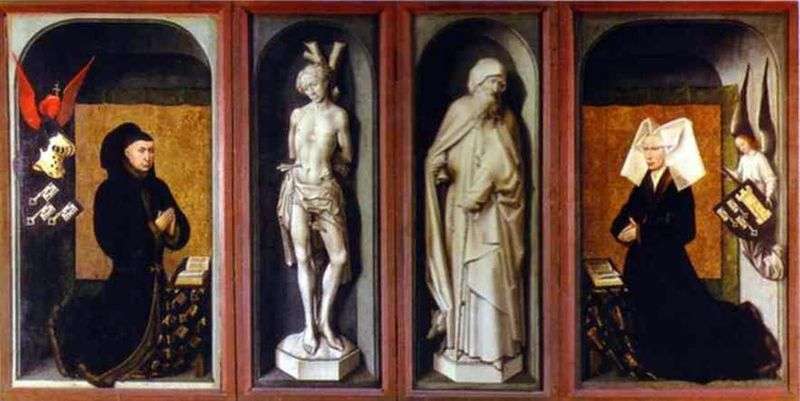 Portrait of Chancellor Rolen and his wife by Rogier van der Weyden
Portrait of Chancellor Rolen and his wife by Rogier van der Weyden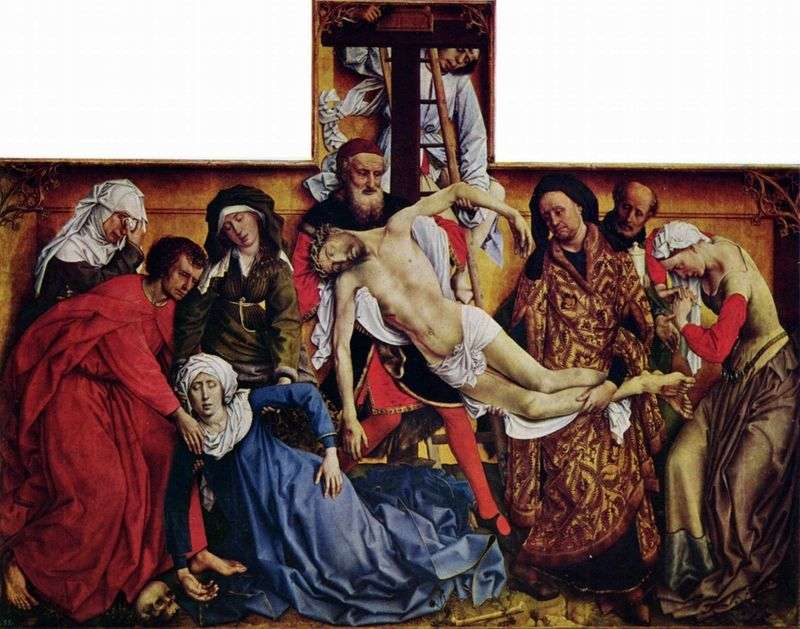 The removal from the cross by Rogier van der Weyden
The removal from the cross by Rogier van der Weyden